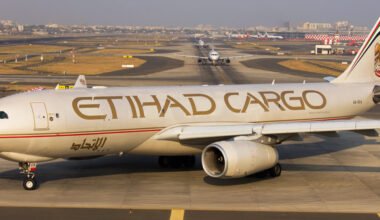Alongside producing commercial jets, Boeing eagerly launched military versions of its products parallel to commercial aircraft. Boeing KC-135 is a product of the same era when Boeing launched the first offspring of Dash-80. Boeing manufactured this Boeing KC-135, intending to fulfill the requirement of aerial refueling. Owe to its reliable features, Strategic Air Command (SAC) utilized this model for 15 years. From 1957 to 1965, Boeing built 732 KC-135 for the air force of the U.S., while 550 of them are still in use by the USAF for different purposes.
Technical Capabilities of Boeing KC-135
| Crew Four Length 41.53m Height 12.7m Wingspan 39.88m Powerplant 4Turbofan CFM-56 engines Avionics Rockwell Collins Refueling Pods Flight Refueling Ltd | |

The procedure of Aerial Refueling
The unique selling point of this modified aircraft lies in its strength of air-to-air refueling tanker aircraft. Primarily, aerial fuel transfer used to be done through the flying boom of the tanker. Positioned at the backside of the fuselage, the operator controls the flying boom. The USAF strongly relied on this flying boom and receptacle techniques of refueling.

KC-135 provides aerial refueling via mk32B wingtip hose and drogue air refueling pods. The recipient comes near the tanker while its probe gets attached to the hose extracted from the tanker. This modish feature enabled the KC-135R to facilitate both probe/drogue and boom/receptacle aircraft with fuel at once.
What did this modification bring?
This modification in Stratotanker’s design introduced an overall modified fuel tanker carrier. It inculcated updates in wings, fuselage, fuel tanks, and additional fuel control systems. Furthermore, Boeing equipped the cockpit of this Boeing KC-135 with special and separate indicators and circuit breakers. Within the refueling pods, the company attached a collapsible funnel-shaped drogue to the hose. This funnel drogue is reeled out to trail just behind the aircraft’s wings. To give stability to the hose while its extension, it is equipped with a constant tension spring. These traits made this model capable of providing refueling services to Navy and Nato aircraft.
Extension in Modifications in Boeing KC-135
Besides providing aerial refueling, this aircraft, upon getting modified, served different other purposes as well. In addition to serving Strategic Air Command, its services include carrying cargo, reconnaissance airplanes, and transport for high-ranking government officials. Extension in services resulted from the modifications like re-skinning of wings with improved aluminum alloy. Moreover, it contained the installation of powerful and fuel-efficient engines. Boeing kept on building this model unless it signed a contract for making military versions of B767 commercial airplanes.
Featured Image: @Eurospot




